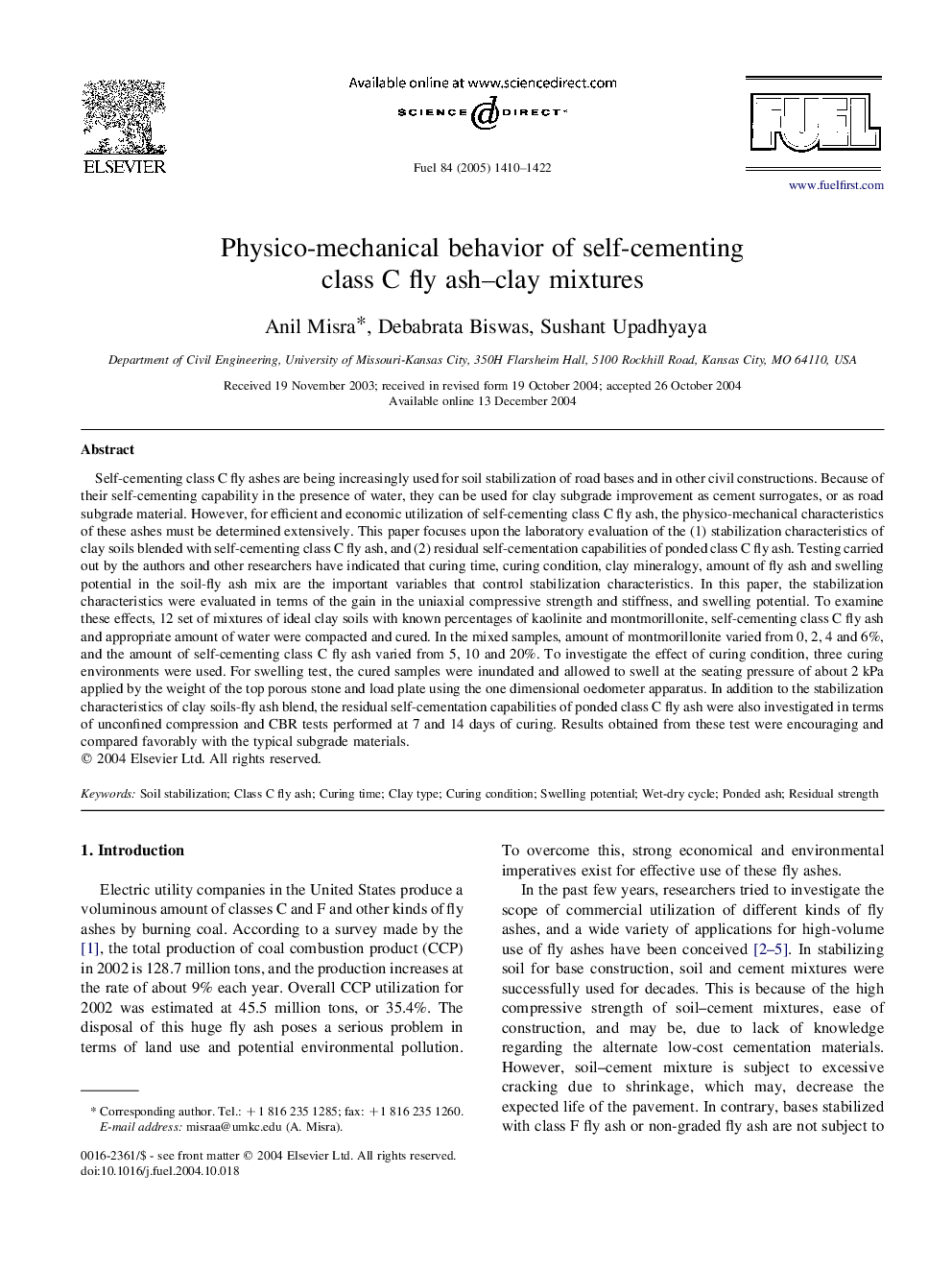| Article ID | Journal | Published Year | Pages | File Type |
|---|---|---|---|---|
| 10273146 | Fuel | 2005 | 13 Pages |
Abstract
Self-cementing class C fly ashes are being increasingly used for soil stabilization of road bases and in other civil constructions. Because of their self-cementing capability in the presence of water, they can be used for clay subgrade improvement as cement surrogates, or as road subgrade material. However, for efficient and economic utilization of self-cementing class C fly ash, the physico-mechanical characteristics of these ashes must be determined extensively. This paper focuses upon the laboratory evaluation of the (1) stabilization characteristics of clay soils blended with self-cementing class C fly ash, and (2) residual self-cementation capabilities of ponded class C fly ash. Testing carried out by the authors and other researchers have indicated that curing time, curing condition, clay mineralogy, amount of fly ash and swelling potential in the soil-fly ash mix are the important variables that control stabilization characteristics. In this paper, the stabilization characteristics were evaluated in terms of the gain in the uniaxial compressive strength and stiffness, and swelling potential. To examine these effects, 12 set of mixtures of ideal clay soils with known percentages of kaolinite and montmorillonite, self-cementing class C fly ash and appropriate amount of water were compacted and cured. In the mixed samples, amount of montmorillonite varied from 0, 2, 4 and 6%, and the amount of self-cementing class C fly ash varied from 5, 10 and 20%. To investigate the effect of curing condition, three curing environments were used. For swelling test, the cured samples were inundated and allowed to swell at the seating pressure of about 2Â kPa applied by the weight of the top porous stone and load plate using the one dimensional oedometer apparatus. In addition to the stabilization characteristics of clay soils-fly ash blend, the residual self-cementation capabilities of ponded class C fly ash were also investigated in terms of unconfined compression and CBR tests performed at 7 and 14 days of curing. Results obtained from these test were encouraging and compared favorably with the typical subgrade materials.
Keywords
Related Topics
Physical Sciences and Engineering
Chemical Engineering
Chemical Engineering (General)
Authors
Anil Misra, Debabrata Biswas, Sushant Upadhyaya,
